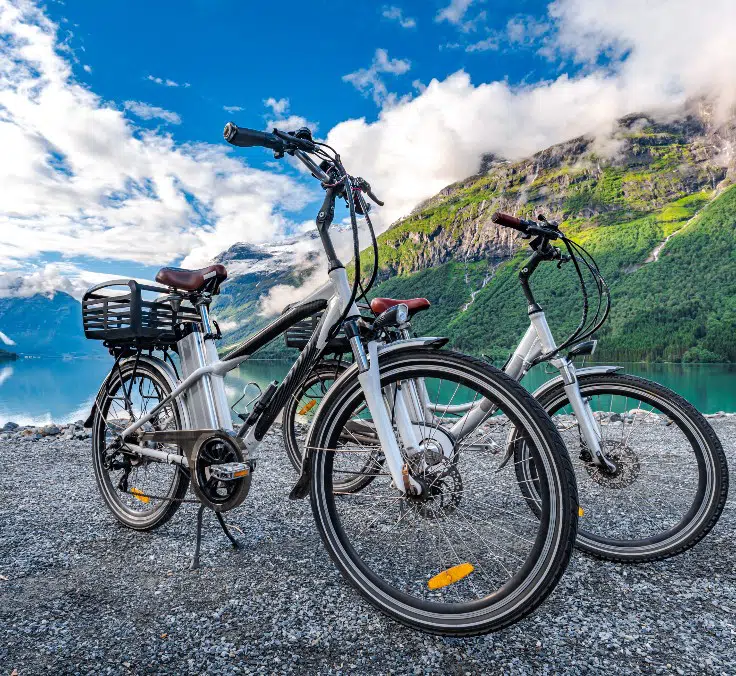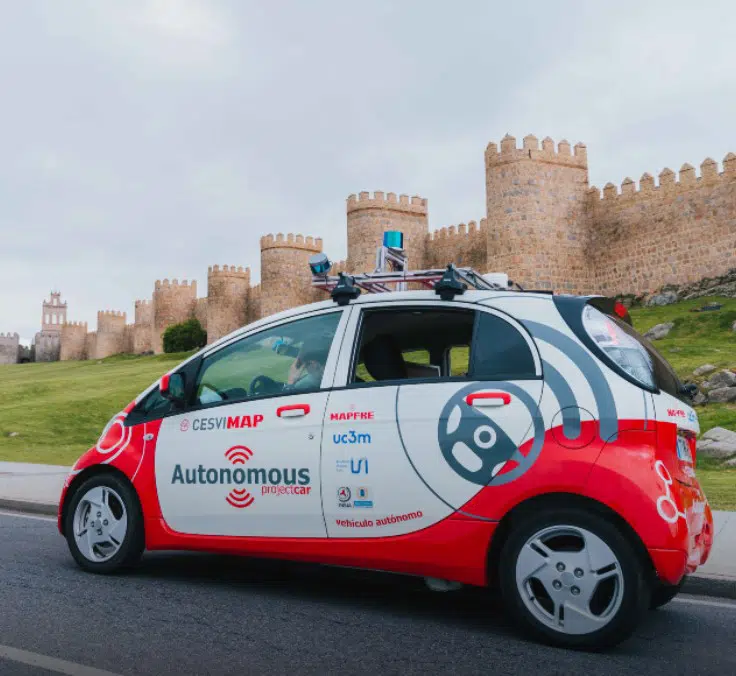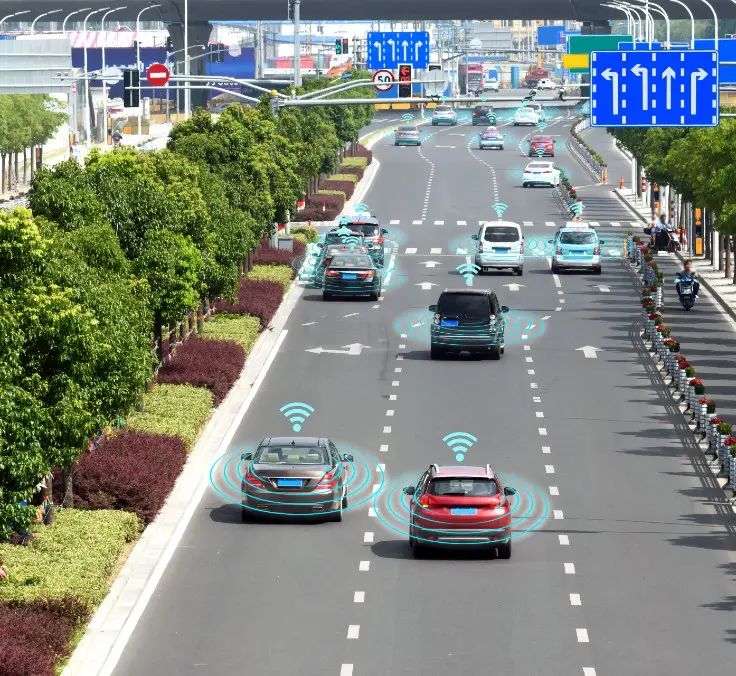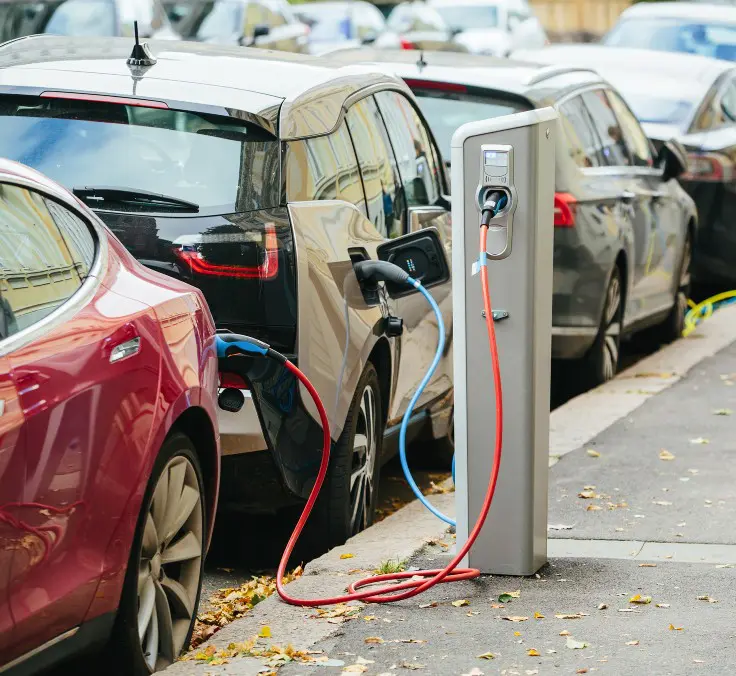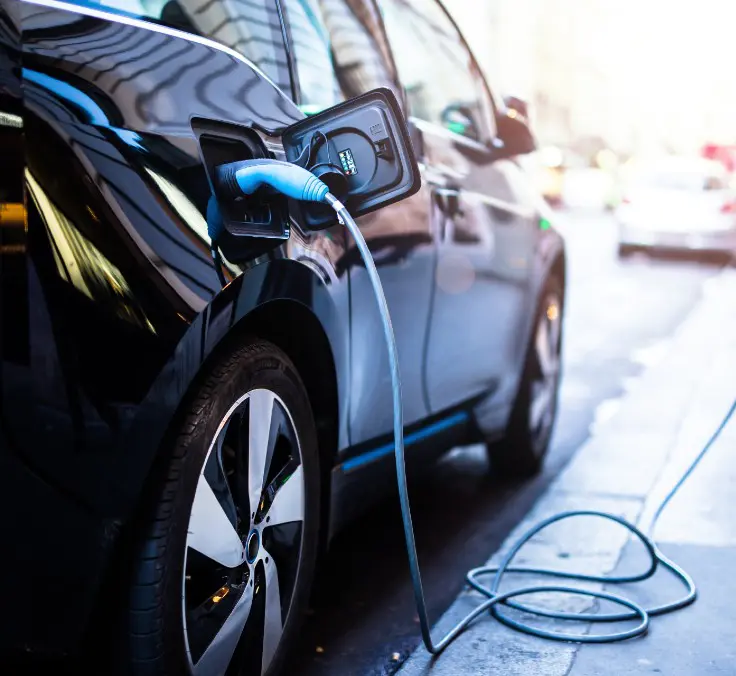SUSTAINABILITY| 24.05.2022
Sustainable mobility, the road to zero emissions
The climate emergency urges us all to act in the transition toward a fairer and more sustainable energy model for our shared way of life. At MAPFRE, we’re playing our part by calling on our entire value chain to make the move to alternative mobility, based on renewable energy and low-carbon emissions.
The debate on environmental impact focuses on energy and industrial activity as the main emitters of polluting gases. However, mobility and the transportation sector must be considered as an essential ingredient in sustainable development strategies. This should translate into effective policies in response to climate change and keep the global temperature increase below 2ºC.
The overcrowding of large cities is the main challenge for sustainable mobility. Due to new technologies, such as big data or concepts like carsharing, we will see a shift toward smart cities with high-performance mobility systems. Transportation infrastructures can last for decades, which means that the decisions we make today will have an impact on the development of mobility in the future.
We will then address the key concepts of the mobility of the future, the trends that are revolutionizing the mobility landscape and the new mobility laws that contribute to a more sustainable future.
New concepts for future and not-so-future mobility
According to the United Nations (UN), the world’s cities occupy only 3% of the earth, but account for 60% to 80% of energy consumption and 75% of carbon emissions. Half of humanity, 3.5 billion people, live in cities today and this number is expected to increase to 5 billion by 2030. Also, since 2016, 90% of city dwellers were breathing air that did not meet safety standards established by the World Health Organization (WHO), which caused a total of 4.2 million deaths due to air pollution.
Considering these alarming data, rapid urbanization will also pose a challenge to urban mobility. This problem has given rise to new concepts that seek to find a solution to this situation. We will review some of them:
- Micromobility: a form of transportation based on the use of light vehicles. In many cases these are integrated into public services that allow them to be exchanged between users, which brings us to the concept of shared micromobility. This refers to all light vehicle solutions used in urban mobility and shared use, the most common of which are bicycles, electric bicycles and scooters.
- Last mile: this is the stretch of road that a person travels before reaching his or her destination, such as getting off the subway or bus. Today, micromobility and shared micromobility is the ideal solution for these distances.
- Ridesharing, ridepooling and ridehailing: these concepts refer to those who opt for car sharing. Ridesharing is car sharing between individuals, such as coworkers, ridehailing is when users book a ride through an app, and ridepooling is when several users share a ride with a professional driver.
- Charging: this concept is closely related to electric mobility. Charging services are designed to facilitate the use of plug-in vehicles in cities. These services allow users to be informed at all times of the nearest recharging points.
Mobility flat rate: with this system, users pay a fixed fee, either monthly or annually, for the use of a vehicle, making it a perfect choice before buying their own vehicle.
Sustainable mobility trends for the next decade
As we have seen, the creation of more sustainable cities and more sustainable mobility systems in general is something we should all encourage. It offers greener solutions and reduces polluting emissions. This will mean better public health, reduced costs and, in short, a better quality of life for all.
Sustainable mobility is a priority if we want to meet the challenge of zero emissions. Although we are still far from achieving this objective, these are some of the trends we will begin to see:
Mobility as a Service
In recent years, shared mobility or micromobility services have proliferated in cities in the form of carsharing, motosharing, bikesharing, etc. These are terms that will continue to take cities by storm, especially in urban centers. All these vehicles will play a key role in the mobility of the future that we are building, as more and more cities are limiting access with private vehicles to urban centers.
The combination of this trend with public transportation is what has recently been defined as Mobility as a Service (MaaS). It is a mobility concept developed around user needs and focused on reducing the use of the private car, combining new mobility trends with public transportation, and through the use of mobile applications that bring together all modes of transportation. The user can search, book and pay for any trip from their cell phone, thus promoting efficient, sustainable and connected transportation.
Connected mobility and smart systems
Mobility is also evolving toward the need to adapt all options to real demand so that the users will have everything at their fingertips. This is leading public transportation operators to accelerate the digitalization of their offerings. For example, they are installing contactless payment systems, QR codes or applying route planning technologies.
In addition, the emergence of the Internet of Things (IoT) is enabling all elements of transportation to communicate with each other: vehicles, traffic lights, etc. If we add to this the massive deployment of 5G, cars will be able to receive information about free parking spaces or dangers outside their field of vision, among many other advantages that we will see in the coming years.
Smart mobility systems use data provided by sensors and cameras scattered throughout cities to provide real-time information to drivers and pedestrians. These systems are very useful for mobility studies. In Rio de Janeiro, Brazil, they have an operations center that receives this information through devices located in more than 215 strategic points and allows them to monitor the city’s traffic situation and receive information updates on other matters related to the city’s mobility.
Electrification of last mile transportation
The year 2020 changed us in many ways, and in the case of Spain, the lockdown made it the third country in the world where e-commerce grew the most, according to data from eMarketer. We reached the levels we had expected to reach in 2024 and it accounted for 11% of total sales.
The last mile places the focus on the last journey a package takes before it is delivered to its intended recipient, and it is one of the most powerful trends in sustainable mobility.
In addition to these online purchases, there is an increasing demand for home services. So these home deliveries increase the traffic in cities and, therefore, the need is growing to find innovative solutions to make these journeys more efficient, silent and sustainable.
Urban planning and increased pedestrianization
Many municipalities have already found that the shift to more efficient and accessible mobility requires good urban planning. This is reflected in many initiatives in cities’ urban planning, which have an impact on our mobility habits.
Population growth and a prioritization of open spaces is leading to an increase in green areas and the widening of sidewalks; this urban planning is reducing travel time for citizens and improving their quality of life in urban areas.
Shared-use and two-wheeled vehicles
It is estimated that approximately 40% of the traffic in city centers consists of drivers searching for parking. Opting for shared use reduces traffic and polluting emissions.
Carsharing is a service that allows you to rent a car for a certain period of time, which helps to reduce the number of private vehicles. Paris is a great example in this regard. It has more than 2,000 electric cars available, with parking stations and charging points throughout the city.
As an alternative to polluting vehicles, we see bicycles as the star vehicle in urban areas. Around 2.5 billion people around the world have already made a bike part of their daily commute. Many cities are opting for this choice because it offers plenty of advantages that improve people’s quality of life by increasing their physical activity and reducing pollution, which has an impact on the health of the planet and of its people. In Latin America, the largest network is in Bogotá, where there are already more than 350 km of bicycle lanes. In Europe, the best known example is Amsterdam, which has more than 400 km of bike-only lanes.
In addition to this ecological choice, there is the bikesharing concept, which consists of installing systems that allow shared use among users in the same city. Copenhagen is one of the cities that has best implemented this system. Bicycles have a tablet that includes a GPS tracker with information on routes and schedules of other transportation in the city, so to improve people’s urban mobility. In Spain, cities such as Vitoria or Barcelona are good examples of the implementation of systems to promote the use of bicycles.
New rollouts may stall if users do not feel safe when using bikes as a means of transport. This is why urban planning is already being carried out in large cities to improve safety.
Autonomous vehicles
We will see the next revolution in vehicles: not only those powered by clean energy, but also those with autonomous driving. These vehicles, using artificial intelligence (AI), can move without driver interaction. An autonomous car can pick up the user and drop them off at their destination while using the best route. Advantages include the improvement in air quality caused by lower volumes of traffic, and it will allow groups that are currently excluded from access to vehicle mobility to make use of it with greater freedom and safety.
Urban tolls
Another trend in sustainable mobility is urban tolls, which has already been rolled out in many cities. It consists of charging a fee to be able to drive on city streets during certain time slots. This encourages the use of the city’s public transportation or shared mobility initiatives. In Singapore they have a system called the Electronic Road Pricing System. This is a series of wireless tolls distributed along the busiest roads, charging a fee depending on the time of day.
New Climate Change Law and the Energy Transition
Among other measures to reduce pollutant emissions in the city is the tightening of the law. The role of many governments and organizations is key to reducing the use of polluting transportation so as to have a lesser impact on people’s quality of life and on the planet.
One of these measures in Spain is the new Climate Change and Energy Transition Law, which obliges municipalities with more than 50,000 inhabitants to establish low-emission zones by January 1, 2023.
This law promotes Sustainable Development Goal 11 and 13: sustainable cities and communities and climate action. In addition, this law aims to fulfill Spain’s commitment to the Paris Agreement. Hence, the law places the fight against climate change and the energy transition at the center of policy.
What are Spain’s objectives with this Law?
The Law sets four objectives for the year 2030:
- Reducing, by the year 2030, greenhouse gas (GHG) emissions of the economy as a whole by at least 23% compared to the year 1990.
- Achieving a share of at least 42% of renewable energies in final energy consumption by the year 2030.
- Achieving by 2030 an electricity system where at least 74% of generation comes from renewable energy sources.
- Improving energy efficiency by reducing primary energy consumption by at least5% with respect to the baseline, in accordance with EU regulations.
The law also establishes that by 2050, Spain must achieve climate neutrality and the electricity system must be based exclusively on renewable sources.
MAPFRE in the Global Mobility Call
MAPFRE has joined the Global Mobility Call as an Allied Partner. The event will take place from June 14 to 16, 2022 in IFEMA MADRID and is organized by Smobhub, which seek to position Spain as an international hub for sustainable mobility.
The Global Mobility Call will be a must-attend event for stakeholders and leaders in the development of safe, inclusive and sustainable mobility. In addition, it is one of the most ambitious projects as it integrates different sectors involved in this transition towards more sustainable mobility in Spain. It is seeing participation from companies in the automotive, technology, transportation, logistics and connectivity, urban planning, infrastructure management, energy and other industries. Working together, the event will be an opportunity for networking and helping to present solutions.
At MAPFRE, we promote sustainable mobility through different aspects that affect systems and services available to people, such as the work carried out by CESVIMAP, our R&D center, to reduce levels of polluting emissions, addressing the study of electrified vehicles and trends such as sharing (both in cars and motorbikes and personal mobility vehicles, such as electric scooters).
In order to make the transition to sustainable mobility a definitive one, everyone needs to be aware of the impact of the way they travel and how they could promote more sustainable and efficient mobility in their own way.
RELATED ARTICLES:


